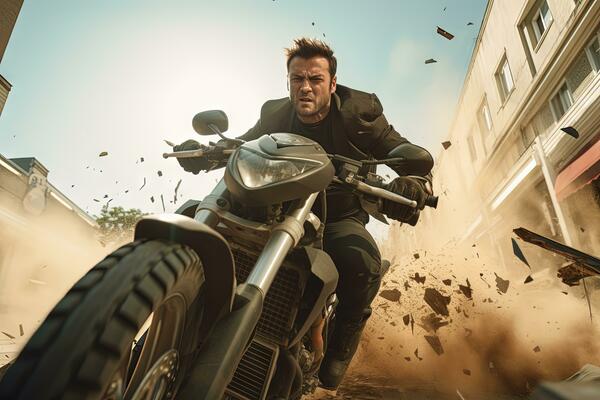Photography has the unique ability to freeze a moment in time, but some of the most captivating images are those that convey movement and energy. Capturing dynamic action shots requires a blend of technical skill, timing, and creativity. Whether you’re photographing sports, wildlife, or everyday activities, mastering the art of shooting motion will bring a new level of excitement and vitality to your photography.
In this article, we’ll explore essential techniques for capturing movement, ensuring that your action shots are not only sharp and clear but also full of life. We’ll also touch on how to incorporate these techniques in photo booth rental Las Vegas setting to add a fun, dynamic element to your event photography.
Understand Shutter Speed
Shutter speed is the most critical setting when it comes to capturing movement. It determines how long your camera’s sensor is exposed to light, which in turn affects how motion is recorded.
Fast Shutter Speed:
A fast shutter speed (such as 1/1000s or faster) freezes action, making it perfect for capturing high-speed activities like a sprinter in full stride, a bird in flight, or a car racing by. The faster the subject, the faster your shutter speed should be.
Slow Shutter Speed:
Conversely, a slow shutter speed (such as 1/30s or slower) creates motion blur, which can add a sense of speed and fluidity to your image. This technique is particularly effective for conveying the motion of water, clouds, or the streaks of light from moving vehicles.
Pro Tip:
When using a slow shutter speed, stabilize your camera with a tripod to avoid unintentional blur from camera shake. This will ensure that only the moving subject is blurred, while the rest of the scene remains sharp.

Panning for Motion Blur
Panning is a technique where you follow the movement of your subject with your camera while using a slower shutter speed. This results in a sharp subject against a blurred background, emphasizing the speed and direction of movement.
How to Pan:
Set your camera to a shutter speed between 1/30s and 1/60s. As the subject moves across your frame, smoothly follow its motion with your camera, and press the shutter while continuing the movement. It may take a few tries to get the timing right, but the results can be stunning.
Why It Works:
Panning not only captures the subject in motion but also creates a sense of continuity, making the viewer feel as though they are moving alongside the action. This technique is especially popular in sports and wildlife photography.
Pro Tip:
Practice panning on slower-moving subjects, like cyclists or pedestrians, before attempting it with faster subjects. As you improve, you can experiment with different shutter speeds to achieve varying degrees of motion blur.
Using Burst Mode
When capturing fast-paced action, timing is everything. Burst mode (also known as continuous shooting mode) allows your camera to take multiple shots in rapid succession, increasing your chances of capturing the perfect moment.
When to Use Burst Mode:
Burst mode is ideal for shooting sports, wildlife, or any situation where the action is unpredictable. Whether it’s the exact moment a player kicks a soccer ball, a bird takes flight, or a child jumps into a pool, burst mode ensures you don’t miss the shot.
How to Use It:
Activate burst mode on your camera or smartphone, and keep your finger on the shutter button as the action unfolds. Later, you can review the sequence of shots and select the one that best captures the moment.
Pro Tip:
Make sure your memory card has enough space and that your camera’s battery is fully charged before using burst mode, as this feature can quickly fill up storage and drain power.
Focus Tracking for Sharp Images
Capturing fast-moving subjects can be challenging, especially when it comes to maintaining focus. Many cameras offer focus tracking (also known as continuous autofocus or AI Servo) to help you keep your subject sharp as it moves.
How It Works:
When focus tracking is enabled, your camera continuously adjusts the focus as the subject moves within the frame. This ensures that the subject remains in focus even if it’s moving toward or away from the camera.
When to Use It:
Focus tracking is essential for action shots where the subject is moving unpredictably, such as in sports, wildlife, or street photography.
Pro Tip:
Pair focus tracking with burst mode to maximize your chances of capturing a sharp, well-composed action shot.
Composing for Action
Composition plays a crucial role in action photography. A well-composed action shot not only captures the movement but also tells a story and evokes emotion.
Leave Space for Movement:
When framing your shot, leave extra space in front of the subject’s direction of movement. This technique, known as “leading the action,” creates a sense of anticipation and allows the viewer to imagine where the subject is headed.
Use Leading Lines:
Incorporate leading lines into your composition to guide the viewer’s eye toward the moving subject. Roads, tracks, and rivers are natural elements that can enhance the sense of motion in your image.
Consider the Background:
Pay attention to the background when composing your shot. A cluttered or distracting background can detract from the action. Instead, look for clean, contrasting backgrounds that make the subject stand out.
Pro Tip:
Experiment with different angles and perspectives to add drama and impact to your action shots. Shooting from a low angle can make the subject appear more powerful, while a high angle can offer a unique view of the action.
Incorporating Action Photography in a Photo Booth
While action shots are typically associated with sports and wildlife, you can bring some of that dynamic energy into a “photo booth” setting. Whether at a wedding, party, or corporate event, a photo booth doesn’t have to be all about static poses.
Add Movement:
Encourage guests to jump, dance, or spin while you capture the action in burst mode. This can result in fun, lively images that capture the energy of the event.
Use Props:
Props like confetti, streamers, or balloons can add movement and excitement to photo booth shots. Ask guests to toss or play with these props as you take the photos, adding a dynamic element to the experience.
Pro Tip:
Set up your photo booth with a backdrop that contrasts with the action, making the movement stand out. Use focus tracking and burst mode to ensure you capture the best moments.
Conclusion
Capturing movement in photography is both a technical and creative challenge, but with the right techniques, you can create dynamic images that truly convey the energy and excitement of the moment. By mastering shutter speed, panning, burst mode, and focus tracking, and by paying attention to composition, you can take your action shots to the next level.

